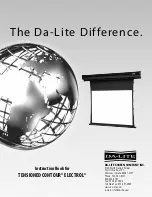
n
12
n
n
13
n
Rain Sensor
the rain sensor keeps the irrigation system from starting or continuing after
rainfall quantities of ¹⁄
8
", ¼", ½", ¾", or 1". We recommend that the sensor be
set at the ½" setting. to adjust to the desired quantity of rainfall, rotate the
cap on the switch housing so that the pins are located in the proper slots. do
not forcibly twist the cap as this might break the pins. the time that it takes the
rain sensor to reset for normal sprinkler operation after the rain has stopped is
determined by weather conditions (wind, sunlight, humidity, etc.). these condi-
tions will determine how fast the hygroscopic discs dry out, and since the
landscape is also experiencing the same conditions, their respective drying
rates will roughly parallel each other. there is an adjustment capability on
the rain sensor that will slow down the rest rate. by turning the “vent ring” to
Section
4
:
AdjustMents And operAtIon
completely or partially cover the ventilation holes, the hygroscopic discs will dry
more slowly. this adjustment can compensate for an “overly sunny” installation
location or peculiar soil conditions. experimenting with the vent rings will best
determine the ideal vent setting. (see Figure 7)
Freeze Sensor
the temperature at which the freeze sensor is activated is 37°F ±2° (3°c ±1°)
and is not adjustable. the freeze sensor feature can be bypassed by moving the
switch (located on the bottom of the rain/freeze sensor) to the “rain” position.
Manual Override
the Manual override button can be
used in 2 functions:
1. running the sprinkler timer
when rain/freeze sensor is active
(deactivating the sensor)
2. to stop timer from watering
(deactivating sensor and timer)
Section
4
:
AdjustMents And operAtIon
Figure 7: rain and vent ring adjustments
08HYD005598 04008-24 rA.indd 13
11/16/07 3:39:39 PM






































